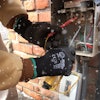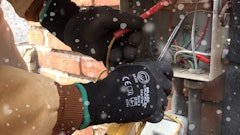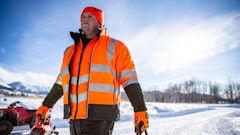
Safety should always be a top priority on a jobsite. Personal protective equipment (PPE) in construction is a critical part of that. There’s heavy machinery, loud noises, falling objects, uneven ground, hazardous materials and so much more that could seriously injure a worker.
For thirty years, I’ve been working in the construction distribution business, working with our team of Safety Product Specialists and supplier partners to educate and support the professional contractors, ensuring that they are investing in adequate PPE to keep their workers comfortable and safe. Too often, though, they are overlooking one important thing — the need for construction PPE for women. If they do remember, there are not many options to choose from. And with women in construction on the rise, it’s more important than ever that they make it a priority.
Addressing the Needs of Women in Construction
According to the Bureau of Labor Statistics, the number of women working in construction has hit a record high, jumping 117 percent in the past six years. The National Association of Women in Construction estimates that 1,173,000 women work in construction today, comprising 9.9 percent of the U.S. construction industry. That’s 1.2 million women working on jobsites every day and 1.2 million women who need the same protective gear and equipment as their male counterparts and yet, not the same.
It’s well accepted that women and men are built differently. Men’s and women’s categories exist for clothing, shoes and accessories, not simply because we may like different patterns or colors, but because they are designed differently. Women are generally smaller in stature and tend to have smaller hands, feet and heads. Women typically have more curves, which is why the Bust, Waist and Hips are the most critical measurements captured by a tailor when fitting for women. Simply making construction PPE smaller and pink does not satisfy the nuances of being designed for women.
Studies conducted by the National Institute for Occupational Safety and Health and the U.S. Department of the Army found that most construction tools, equipment and clothing are not designed for a women's physique. When women have to accept gear designed for men, it can at a minimum be uncomfortable, which can still lead to poor performance. Far worse, though, is that this gear can be unsafe. Baggy, long, or loose-fitting items can easily get caught on equipment or machinery. Women in those studies complained about having to wear gloves that were so big it was impossible to pick anything up, sleeves so long they needed to be rolled and boots so large they had to wear two pairs of socks to keep them on.
In adjusting these items, women put themselves at risk. Pinning a sleeve can impair its ability to protect the skin. An improperly fitting boot can cause trips or falls, hard hats or helmets that fall off or don’t fit securely aren’t protecting the head from falling or flying objects. Even something as simple as adjusting a harness strap so that it fits comfortably across a woman’s chest can impact its ability to keep the wearer safe.
The need for adaptation is very real, especially as the construction industry is still in dire need of more workers. According to Associated Builders and Contractors, the construction industry will need to attract an estimated 501,000 additional workers on top of the normal pace of hiring in 2024 to meet the demand for labor. If women are willing and able, we need to help them be successful.
Brands and Increasing Awareness
I am encouraged by the number of companies ramping up the effort to fill the void. They are creating durable, safety-focused construction PPE made specifically for women. These items come in smaller sizes and have features such as cinched waists for a contoured fit and slits at the hips for greater mobility. Safety glasses and hard hats are designed for slimmer faces and smaller heads, while boots and gloves are narrower and come in smaller sizes.
By having these better-fitting options, women are not only safer, but can also work with confidence. Many females in construction, which remains predominantly male, already feel like they have to prove their abilities, a task made even harder if they feel like a small child in a giant vest. When workers of any gender are confident, it shows up in the quality of their work.
Some contractors are simply not aware of the need for this specialized equipment, or that it even exists and I’m working every day to change that. I encourage every contractor to seek out PPE designed for women. Your existing female workers will be better equipped to work hard and safely, while your potential to attract an entire pool of untapped labor can expand significantly. Simply put, if one size doesn’t fit all in a department store, it definitely doesn’t on a jobsite.
Wilma Blas is senior manager – Product Category Management at White Cap. With 30 years of experience in distribution, she joined White Cap when it was headquartered in Costa Mesa, California and only operating with nine branches, all in So. California. Her experience includes category management of safety products and indirect sourcing.




















